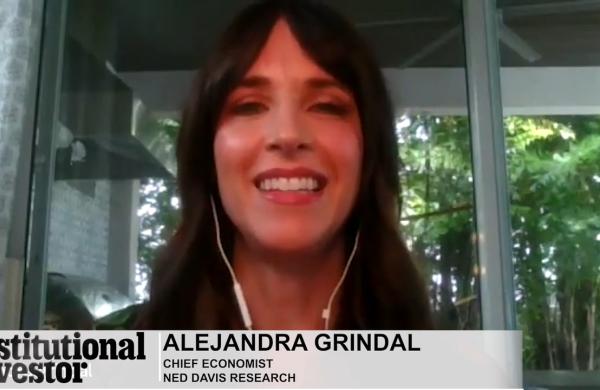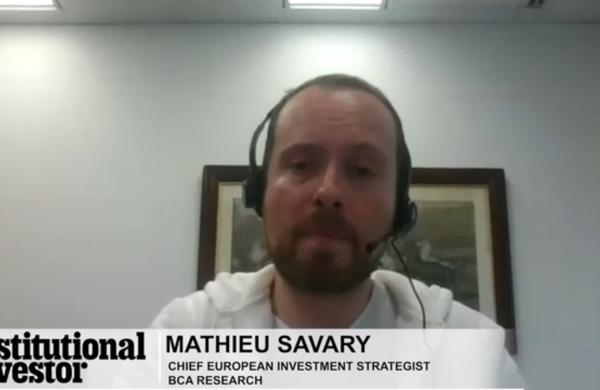At 9:45 on a Monday morning in mid-November 2000, the 13 members of the California Public Employees' Retirement System's board gathered in a spacious conference room at the Crowne Plaza Hotel, just a few miles from the Los Angeles International Airport. By the time their meeting adjourned seven hours later, they had made a momentous decision: CalPERS would invest $1 billion of its $170 billion in hedge funds. The news broke on the pension plan's Web site later that afternoon.
The move electrified the pension and hedge fund communities. CalPERS's hedge fund plunge was a transforming moment for money management -- a ringing endorsement of hedge funds by the nation's biggest and most visible public pension plan. Before, pension plans, including CalPERS, had merely dabbled in hedge funds, which were mostly the province of high-net-worth investors and university endowments. But the commitment by the California plan effectively bestowed the Good Housekeeping Seal of Approval on this controversial asset class. Says Joseph Pescatore, head of capital introduction for UBS, "What CalPERS did was legitimize hedge funds."
In the wake of the CalPERS initiative, more than a dozen public plans have ventured into hedge funds. Among them: Massachusetts' Pension Reserves Investment Management Board (which has invested $1.5 billion in hedge funds), the Pennsylvania State Employees' Retirement System ($1.7 billion) and the Teacher Retirement System of Texas ($1.2 billion).
Yet since proclaiming its commitment to hedge funds, CalPERS, with current assets of $166 billion, has not exactly set the hedge fund world ablaze. Three and a half years later, the plan has managed to invest a little more than two thirds of the allotted $1 billion. For the past 12 months, CalPERS has made essentially no hedge fund investments whatsoever. What's more, the hedge fund investments that the pension giant did get around to making lagged its customized benchmark last year by more than two and a half percentage points, although CalPERS's hedge fund portfolio did exhibit only one fifth the volatility of the Wilshire 2500 index.
"Never before has so much attention been paid to an investment that actually accounts for about one tenth of 1 percent of the hedge fund industry," says James Hedges, president and CIO of LJH Global Investments, a hedge fund advisory firm.
Is CalPERS consumed by buyer's remorse -- so disillusioned with hedge funds that it regrets ever having heard of this strange asset class (which is still terra incognita to nine out of ten large public pension plans)?
Hardly.
CalPERS is poised to make an even bigger splash in the hedge fund world. As it turns out, the California plan has used the past three years to educate itself thoroughly about the asset class, strengthen its risk management system -- and whet its appetite for more. Chief investment officer Mark Anson is planning to ask the CalPERS board to hike the plan's hedge fund allocation to as much as a staggering $5.2 billion -- a move that would make the retirement plan by far the world's biggest known investor in hedge funds. Specifically, he intends to propose that the board approve an allocation of 3 to 5 percent of CalPERS's $105 billion in global equity assets to hedge funds. The board is likely to go along. Asserts Anson, "We will move forward."
Anson should know. More than anyone, he has been responsible for setting CalPERS's pace. A no-nonsense boss and the author of three investment tomes on derivatives, the 44-year-old was recruited in October 1999 by CalPERS's thenequity chief, Robert Boldt, to develop a hedge fund program for the pension plan. Anson rose to the CIO job in December 2001 and has been the galvanizing force behind CalPERS's at times fitful foray into alternative investments.
It hasn't been easy. CalPERS has been plagued in recent years by California politics; by high-level turnover (CIO Sheryl Pressler and Boldt resigned in early 2000); by the defection of top investment staffers (three quit in six months); and by criticism from industry members that the whole hedge fund program has been moving at a glacial pace. Says Thomas Schneeweis, a finance professor at the University of Massachusetts, Amherst, "I can see why CalPERS would want to move in a careful, deliberate manner, but they should easily have been able to place $1 billion by now."
Anson vigorously defends his slowly, slowly approach. "Yes, we've been conservative and maybe at times too cautious," he allows. "But doing things right takes time. People associate hedge funds with risk, and we've deliberately set out to invest in a way in which there is actually less risk than in our traditional equity pool."
Certainly, CalPERS set an example for other pension plans when it said it would invest in hedge funds. Does its slow follow-through set another good example -- or present a cautionary tale? Or is it a little of each?
Not until April 2002, four months after Anson assumed the CIO post (and 17 months after the investment committee's fateful meeting at the Crowne Plaza), did CalPERS place the first tranche of its $1 billion hedge fund allocation. Then it spread a relatively paltry $50 million among five managers, deploying a mix of long-short equity and equity-linked arbitrage strategies. By the end of the first quarter of 2003, CalPERS had invested an additional
$530 million in hedge funds -- then it stopped investing in them altogether. Today the plan's hedge fund portfolio, allowing for appreciation, is worth $697 million, a sum equal to less than one half of 1 percent of CalPERS's total assets. The money is arrayed among 14 single-strategy funds managed by firms such as Andor Capital Management, Liberty Square Asset Management, Symphony Asset Management and Welch Capital Management.
In 2003, a year in which the S&P 500 returned 28.7 percent, the overall portfolio returned a still-respectable 16.7 percent, compared with 19.3 percent for its customized benchmark (a combination of the Wilshire 2500 and Treasury bills plus 7 percentage points). Between April 2002 and the end of March 2004, the hedge fund program, formally known as the Absolute Return Strategies Portfolio, outperformed its custom benchmark by about 200 basis points.
"We trailed our benchmark last year because we took less risk -- one fifth the risk of the market instead of [the planned] one half," says Anson. He argues that this remarkably low volatility makes CalPERS's great hedge fund experiment a great success. Only one of the plan's funds underperformed its benchmark in 2003. Like many hedge funds that shorted stocks in last year's buoyant market, Andor Technology Fund, which invests about $50 million of CalPERS's money in long-short equity strategies, suffered a drop, of 15.8 percent.
Anson is absolutely right, though, that the hedge fund portfolio's ultralow volatility is important in the scheme of things at CalPERS. The plan is heavily weighted toward equities, with 41 percent of its assets in U.S. stocks and 22 percent in foreign stocks. The fund allocates 27 percent to fixed income, 5 percent to private equity and 5 percent to real estate.
Another reason that CalPERS took its own sweet time investing in hedge funds is that Anson avoided the easy out: investing in funds of hedge funds that do the fund selecting for you. Not only was he determined to avoid that double layer of fees, but he also wanted to develop in-house expertise in alternative investments. (CalPERS handles 57 percent of its assets in-house.)
But the CIO felt unprepared to choose individual hedge fund managers himself, so he devised an unusual strategy. He persuaded a fund-of-funds provider, Blackstone Group's Blackstone Alternative Asset Management, to break with convention and serve as CalPERS's special adviser in suggesting hedge funds. Although Anson praises this training-wheels approach, which got the plan rolling, CalPERS and Blackstone parted ways last September when CalPERS elected to move to a multiple-adviser format and Blackstone bristled at the notion of collaborating with competitors. CalPERS selected two hedge fund advisers, UBS O'Connor and Pacific Alternative Asset Management Co. Contract negotiations with a third, Financial Risk Management, broke down.
"We were pleased to have the opportunity," says J. Tomilson Hill, CEO of Blackstone Alternative Asset Management. "The work we did laid the foundation for the next phase of the program."
In any event, CalPERS can't be accused of rushing headlong into hedge funds. It first began to flirt with them in November 1996, when Pressler, who now lives in Atlanta and serves on several corporate boards, and Boldt, now CIO of University of Texas Investment Management Co., launched an alternative-investment program. Aided by consulting firms Hamilton Lane Advisors and Pacific Corporate Group, CalPERS set out to put 3 to 4 percent of its nearly $100 billion in assets at the time into private equity and venture capital, and eventually, it did. Not until August 1999, however, did CalPERS formally proclaim its hedge fund ambitions. The fund announced its plans to allocate as much as 25 percent of its $45 billion active equity portfolio to private equity, hedge funds and so-called hybrid funds, which combine private equity and hedge funds.
CalPERS soon made its first hybrid fund investment, a $300 million allocation to a technology fund managed by Pivotal Asset Management. The San Franciscobased firm's principals had been part of Amerindo Investment Advisors, a manager CalPERS used for long-only tech stock investing. A few months later CalPERS placed an additional $125 million in another hybrid fund, the Abacus Fund, a limited partnership managed by Boston-based Abry Partners. For CalPERS, it wasn't a happy introduction to hybrid investing: Pivotal's technology focus sent it plunging 49 percent between August 2000 and August 2003. Both funds had been liquidated by 2003.
To create a full-fledged hedge fund program, in October 1999 deputy CIO Boldt recruited Anson, then a portfolio manager for OppenheimerFunds, as CalPERS's new principal investment officer for alternative and hedge fund investments. With a BA from St. Olaf College in Minnesota, a Ph.D. in finance from Columbia University and a law degree from Northwestern University, Anson had worked as a securities lawyer and as head of equity derivatives at Salomon Brothers before joining OppenheimerFunds in 1997.
There he had suffered an ordeal that may help explain his current caution. As co-manager of the Oppenheimer Real Asset Fund, an inflation-hedging portfolio that invested one third of its assets in commodity-linked notes and futures and the remainder in fixed income, Anson endured the wrenching experience of a fund meltdown. The fund's net asset value plunged nearly 45 percent in 1998 when commodity prices dropped and securities markets were hit by Russia's debt default and the near-collapse of hedge fund Long-Term Capital Management.
Once at CalPERS, Anson quickly realized that he would have to reassure hedge fund managers that the huge fund would not do anything rash to disrupt their industry. Rumors were circulating that CalPERS was plotting a major move into hedge funds. Indeed, on September 1, 1999, the New York Times reported that CalPERS would invest as much as $11 billion in hedge funds and other alternative investments.
"People in the hedge fund industry were nervous that we were going to come in like a bull in a china shop and fill up every good manager in existence," Anson recalls. "We needed to get a new number out there to describe our hedge fund plans. I suggested we start with $1 billion. That was a large enough number to send the message to the market that we were serious and small enough that for us it was still a conservative way to begin."
Just as Anson was settling in, his bosses Boldt and Pressler stalked out the door, leaving within a few months of each other in early 2000. For years, they had had to fend off pressure from State Treasurer Philip Angelides, a member of the 13-person CalPERS board of trustees who kept pushing an activist agenda, urging CalPERS to sell tobacco stocks and restrict its investments in certain emerging markets. In May 2000 CalPERS named Daniel Szente, a veteran pension manager from the State Teachers Retirement System of Ohio, as its new CIO.
Happily for Anson, Szente turned out to be a staunch proponent of hedge funds. In fact, he joined Anson and staff portfolio manager Kurt Silberstein -- who's now in charge of hedge funds -- in preparing a presentation extolling the funds for the November 2000 board meeting. It was at that gathering that the board approved Szente and Anson's proposal to authorize a $1 billion commitment to hedge funds. No timetable was set.
Inevitably, California politics complicated things. In the summer of 2001, as plans to invest the hedge fund allocation were moving along, then-controller Kathleen Connell criticized Szente for circumventing her office in giving CalPERS's ten in-house portfolio managers a raise that put their compensation above legal limits set for state employees. She insisted that only she, as controller, was entitled to approve public servants' compensation and sued CalPERS to affirm her authority.
Despite this major distraction, Szente and Anson persevered on the hedge fund front. That same summer, at Anson's urging, Szente hired Blackstone as its hedge fund consulting firm, at an annual fee of $5 million. But not long after Szente closed the deal, he suffered an embarrassing public defeat. In October 2001 a state court sided with the controller, ruling that CalPERS's board had circumvented civil-service ceilings in paying its portfolio managers. Szente quit the next month to join a small, San Franciscobased money manager, McMorgan & Co.
As Szente's equity chief, Anson was a shoo-in to succeed him as CIO, and he did in December 2001. He spent much of his first few months on the job chatting up board members and learning how to deal with reporters and political activists. The new CIO and his successor as hedge fund chief, Silberstein, along with Christy Wood, the plan's global equity chief, conferred frequently with Blackstone's fund-of-funds point man, Stephen Sullens. Anson made it clear that he was looking for funds with low-risk strategies and consistent performance. Sullens, meanwhile, explained that some top-performing hedge funds were off-limits to CalPERS because their limited capacity was reserved for existing Blackstone clients.
He also persuaded CalPERS to ease its extensive reporting requirements for hedge fund managers. Anson stated that CalPERS would require only that a manager agree to work with International Fund Services, CalPERS's hedge fund administrator, which consolidated investment data for reporting and risk monitoring. "We are somewhat leery of managers who mark their own books," notes Anson.
Blackstone had never before acted as purely a hedge fund adviser, but the firm considered its fee -- 50 basis points per year on the $1 billion hedge fund allocation -- quite attractive. Nevertheless, nearly a year elapsed between the time Blackstone signed on and the time CalPERS invested that initial $50 million in hedge funds. Anson makes no apologies: "This was going to be done on our terms. We wanted to make sure we took the time to learn the space."
So in the spring of 2002, in the teeth of a growling bear market, CalPERS plumped for what it judged, with Blackstone's guidance, to be a conservative cast of hedge fund characters: Andor Capital Management, Atticus Capital, Evnine-Vaughan Associates, Liberty Square Asset Management and Symphony Asset Management (see "The Hedge Fund 100," page 39).
The Andor investment was a bet on tech stock guru Daniel Benton, who had recently split from Pequot Capital Management, the firm he had co-founded with Arthur Samberg; Benton had taken 19 analysts and about half of Pequot's $15 billion in assets with him. Atticus, a well-respected merger arbitrage fund, was founded in 1995 by Timothy Barakett, a Harvard MBA (and hockey player, who was drafted but never signed by the New Jersey Devils). Other CalPERS choices: Symphony's Rhapsody Fund, a credit-oriented convertible arbitrage strategy; Liberty Square's global (ex-U.S.) long-short equity fund; and Evnine-Vaughan's Pentangle Partners, a dollar-neutral, equity statistical arbitrage strategy.
The money began to flow more liberally. By summer 2002 CalPERS had doled out $250 million to its five managers. They promptly proceeded to earn their fees. "Talk about stress testing right out of the gate," says Silberstein. Between April 1, 2002, when the first of the hedge fund money was invested, and the following October, a period in which the Wilshire 2500 index -- CalPERS's customary equity benchmark -- tumbled 28 percent, the fledgling hedge fund portfolio slipped a mere 4 percent.
By the end of 2002, an abysmal year for the markets, CalPERS had approved investments in no fewer than 13 hedge funds, including Apex Capital, Bain Capital Tosca Fund and Welch Entrepreneurial Fund. By the start of 2003, CalPERS had invested $580 million of its $1 billion hedge fund allocation.
Then the program stalled. Apart from a $70 million commitment to a second Atticus fund in early 2003, CalPERS has invested no new money to hedge funds. Some in the industry speculate that in the second half of the year, Silberstein and his staff simply got bogged down in the cumbersome process of searching for advisers to complement Blackstone. Silberstein, however, echoes his boss in insisting that CalPERS has been deliberately patient. "You can say we sat on our wallets," he says.
Now they've opened them wide. Anson and Silberstein expect to fund at least a half dozen new managers by the end of this year. As more than two thirds of CalPERS's hedge fund managers are long-short equity or equity-linked, the pair are focusing on other styles for the remaining $420 million of the $1 billion commitment. These include: convertible arbitrage, merger arbitrage, multistrategy and distressed and, as Anson puts it "something truly market-neutral." The fund is also looking into fixed-income arbitrage and credit long-short, which capitalizes on the proliferation of credit derivatives.
"We still have some dry powder left on the $1 billion," Anson says. "I wouldn't go back to the board for a new commitment until the $1 billion is filled." But once that happens, probably sometime later this year, Anson will be back, seeking an additional $4 billion or so for hedge funds. He will ask -- and hedge fund managers will, in good time, receive.
Q&A: Anson considers kurtosis
A veteran portfolio manager with a Ph.D. in finance and a law degree, Mark Anson championed hedge funds from the moment he arrived at the California Public Employees' Retirement System in October 1999. CIO since December 2001, he recently sat down with Staff Writer Rich Blake to discuss the plan's hedge fund strategy, as well as interest rates, regulation -- and a mathematical concept known as kurtosis.
Alpha: CalPERS demands a great deal of information from its managers, yet hedge funds are known for being secretive. Have you found a middle ground?
Anson: We are somewhat leery of managers who mark their own books. So we focus more on hedge funds that use a third-party administrator to do all of their accounting.
Has that made it difficult to find managers?
If anything, it helps us, because the managers with whom we invest understand that we're taking them seriously.
Why didn't you go the fund-of-funds route?
We wanted the expertise in-house. We wanted to avoid paying the extra layer of fees. And the third reason is that when you buy a fund of funds, you're buying an off-the-shelf product, which may or may not match the risk profile that you want. We wanted to build a customized product to match a specific risk profile. Our hedge fund program will have no more volatility than our internal equity index fund [the Wilshire 2500].
You created a customized hedge fund benchmark, half Wilshire 2500 and half Treasury bills plus 7 percentage points. Are you satisfied?
Actually, we're going to change it to half Wilshire 2500 and half T-bills plus 5, because to get up to T-bills plus 7, we'd have to take on additional risk and additional leverage. We'd rather be conservative.
Last year you underperformed your benchmark by 260 basis points.
Any manager can have a bad year. The program was built to withstand it. We've had no disasters.
Blackstone Alternative Asset Management was your hedge fund adviser for two years, but its contract wasn't renewed. Some say there was a falling out.
People make too much out of it. We hired Blackstone for two years to get us off the ground, and they did a great job in doing that. But what we wanted to do was go to a multiple-adviser approach, and Blackstone was part of the finalist group that we considered. But probably they wanted to be a sole source manager. Part of it was pricing.
What regulatory reforms are warranted for hedge funds?
The thought process at the Securities and Exchange Commission is to have hedge fund managers register. Registration is not a panacea, but it does give everyone a starting point for due diligence.
You're quite a prolific writer. What are you working on?
Right now [CalPERS hedge fund chief] Kurt Silberstein and quant analyst Ho Ho and I are working on a research paper that seeks to provide a quantitative framework for blending different hedge fund managers into the most efficient portfolio. What we are doing is looking beyond volatility and expected returns to include such things as the skewness of hedge fund managers' return distributions as well as kurtosis. That usually refers to fat-tailed distributions -- those with a lot of outlier events. The whole point is to show the impact of these other effects when optimizing a hedge fund portfolio. Hedge fund return distributions typically do not follow a normal, or bell-curve, distribution.





